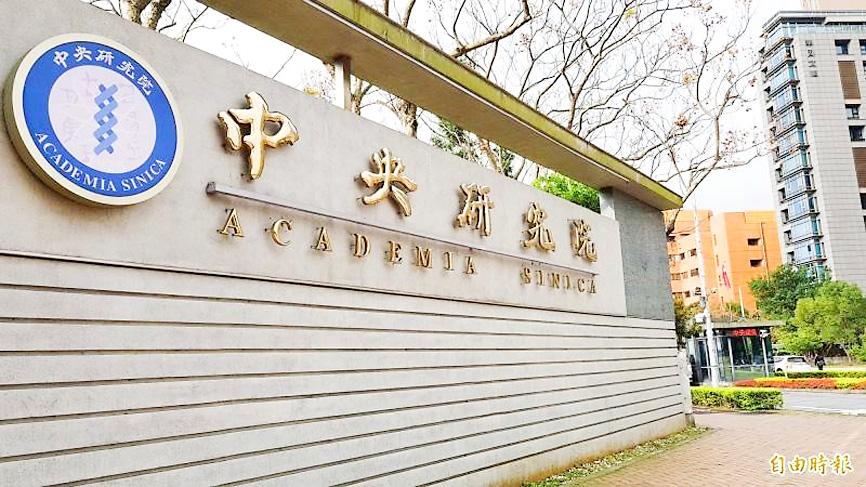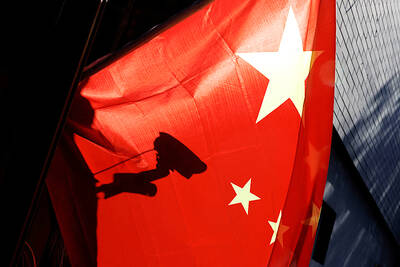The number of typhoons that make landfall in Taiwan in the last quarter of the 21st century is expected to be roughly half the number that landed from 1979 to 2015, due to the effects of climate change, a researcher said.
There are likely to be 44 percent to 54 percent fewer typhoons hitting Taiwan at the end of the century, which would result in 40 to 60 percent less rainfall annually, Academia Sinica researcher Hsu Huang-hsiung (許晃雄) said on Tuesday, adding that the situation would hugely affect the nation’s agriculture and water supply.
Taiwan would also experience increasingly warmer winters and springs, he said.

Photo: Chien Hui-ju, Taipei Times
Hsu said that he and his research team used a high-resolution atmospheric model in their analysis of climate change in East Asia and the northwestern Asia-Pacific.
The team discovered that a weakening of atmospheric circulation during winter would contribute to a reduction in rainfall in winter and spring, he said.
Reduced winter rainfall would affect farmers’ ability to sow rice in the spring, he added.
The team found that there would be a reduction in summer and autumn rainfall above the South China and Philippine seas, caused by increases in the high-pressure systems there, he said.
For northern Taiwan, springtime southwesterly winds are an important annual source of rain, he said.
The conditions that would bring those winds are situated off the southwest coast of Taiwan proper, but in their research, the team found that they would move northward, causing reduced rainfall in northern Taiwan, he said.
The northwestern Pacific Ocean is expected to see the greatest decrease in typhoon activity of all the planet’s oceans, he said.
Typhoons that do occur at latitudes above 20 degrees north latitude would become stronger, and those south of that latitude would become weaker, he said.
Ocean temperatures near Taiwan would increase by about 3°C, and although typhoons hitting Taiwan would bring 4 to 8 percent stronger winds, as well as 30 to 40 percent more rain than current typhoons, a decrease in the number of typhoons would mean an overall decrease in annual rainfall, he said.
The team collected long-term data from various sources, such as climate change research by the Ministry of Science and Technology and Academia Sinica, he said, adding that analysis models were processed using the National Center for High-performance Computing’s Taiwania 1 supercomputer.

A magnitude 7.0 earthquake struck off Yilan at 11:05pm yesterday, the Central Weather Administration (CWA) said. The epicenter was located at sea, about 32.3km east of Yilan County Hall, at a depth of 72.8km, CWA data showed There were no immediate reports of damage. The intensity of the quake, which gauges the actual effect of a seismic event, measured 4 in Yilan County area on Taiwan’s seven-tier intensity scale, the data showed. It measured 4 in other parts of eastern, northern and central Taiwan as well as Tainan, and 3 in Kaohsiung and Pingtung County, and 2 in Lienchiang and Penghu counties and 1

A car bomb killed a senior Russian general in southern Moscow yesterday morning, the latest high-profile army figure to be blown up in a blast that came just hours after Russian and Ukrainian delegates held separate talks in Miami on a plan to end the war. Kyiv has not commented on the incident, but Russian investigators said they were probing whether the blast was “linked” to “Ukrainian special forces.” The attack was similar to other assassinations of generals and pro-war figures that have either been claimed, or are widely believed to have been orchestrated, by Ukraine. Russian Lieutenant General Fanil Sarvarov, 56, head

‘POLITICAL GAME’: DPP lawmakers said the motion would not meet the legislative threshold needed, and accused the KMT and the TPP of trivializing the Constitution The Legislative Yuan yesterday approved a motion to initiate impeachment proceedings against President William Lai (賴清德), saying he had undermined Taiwan’s constitutional order and democracy. The motion was approved 61-50 by lawmakers from the main opposition Chinese Nationalist Party (KMT) and the smaller Taiwan People’s Party (TPP), who together hold a legislative majority. Under the motion, a roll call vote for impeachment would be held on May 19 next year, after various hearings are held and Lai is given the chance to defend himself. The move came after Lai on Monday last week did not promulgate an amendment passed by the legislature that

FOREIGN INTERFERENCE: Beijing would likely intensify public opinion warfare in next year’s local elections to prevent Lai from getting re-elected, the ‘Yomiuri Shimbun’ said Internal documents from a Chinese artificial intelligence (AI) company indicated that China has been using the technology to intervene in foreign elections, including propaganda targeting Taiwan’s local elections next year and presidential elections in 2028, a Japanese newspaper reported yesterday. The Institute of National Security of Vanderbilt University obtained nearly 400 pages of documents from GoLaxy, a company with ties to the Chinese government, and found evidence that it had apparently deployed sophisticated, AI-driven propaganda campaigns in Hong Kong and Taiwan to shape public opinion, the Yomiuri Shimbun reported. GoLaxy provides insights, situation analysis and public opinion-shaping technology by conducting network surveillance